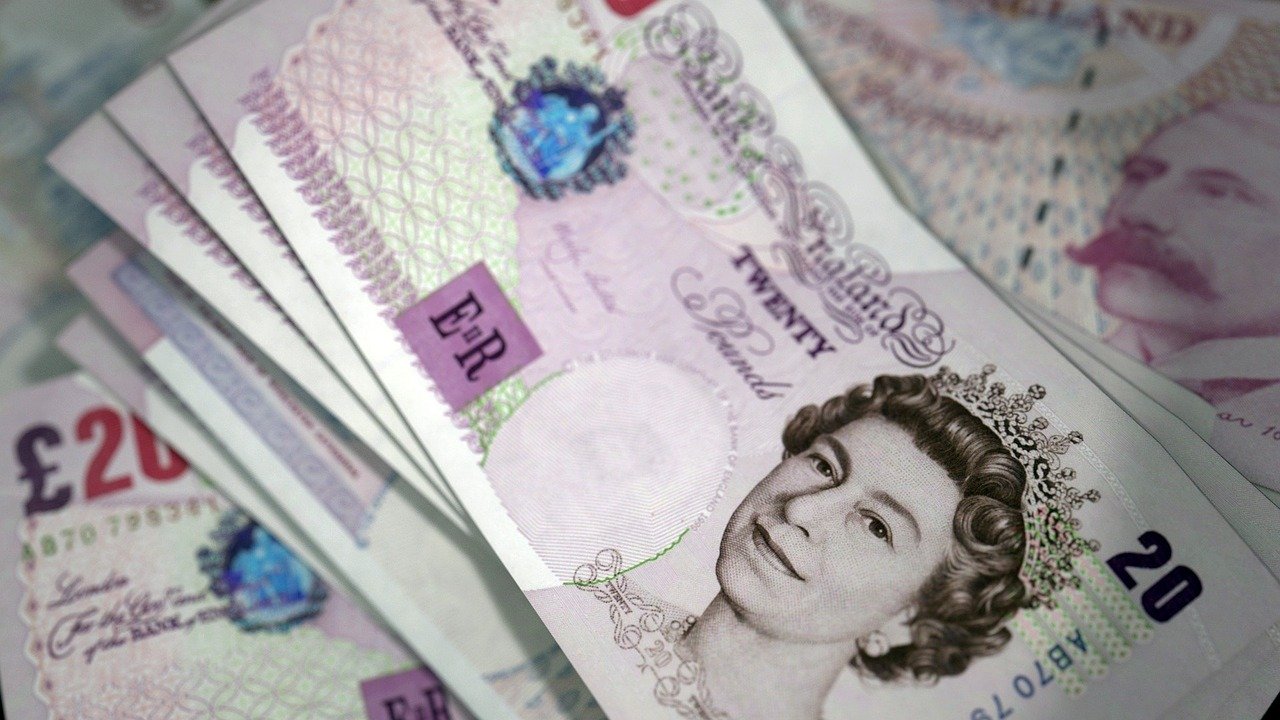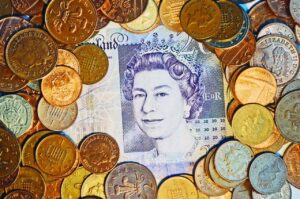At the time of the Anglo-Saxons, there were small silver coins called sceattas, which were used in commerce. They originated in Frisian coins and weighed about 20 grains or 1.3 grams.
790 A.D.
Offa, king of Mercia in 790 A.D. put into circulation a silver penny of 22.5 grains (1.5 grams), and two hundred and forty of them were made from a measure of silver known as the pound tower, which apparently weighed 540 grains or 350 grams. By 1526 the adopted standard was the Troy pound of 5,760 grains or 373.242 grams.
1158
The monetary unit that we know by the term pound has its origin in the weight value of one pound of very pure silver that is known as sterling silver. This sterling had a basic unit which was the Tealby penny, instead of the pound, and which was introduced as the English currency by Henry II king in 1158, but the name sterling was not given until later. The term sterling is of French origin, sterling, modified to stiere in the old English with the meaning of strong, firm and immovable. Sterling was originally the name of a 1/240 pound silver penny. That silver penny initially had buying power a little above the modern pound. In modern times the pound replaces the penny as the basic unit of exchange as continuous inflation has led to the devaluation of the currency.
1560
In 1560 the pound sterling is established by Elizabeth I and her currency advisors as Sir Thomas Gresham who put order in the financial chaos of Tudor’s England, caused by the currency degradation that brought a marked inflation between the years 1543 and 1551. In that year according to Fernand Braudel the silver content of the penny was only ⅓ of the total. The coins were only fiduciary currencies, like today’s coins, and even affected the exchange rate in the Antwerp market where English clothing was sold to all of Europe. All circulating coins were then removed and reactivated to bring them up to standard, and paid at a discount.
1621
The pound sterling always remained at its intrinsic value, which was considered a fetish for public opinion according to Braudel, uniquely among all European currencies, even after the United Kingdom adopted the gold standard, until after World War I, and endured the financial crises of 1621 when John Locke defined it as an invariable fundamental unit. Even during the civil war it remained unvalued in money markets throughout Europe.
1694
The pound sterling has been the official currency of the Bank of England since its opening in 1694.
1717
The pound unofficially passed from silver to the gold standard for an overvaluation of this metal in England that caused the import of gold from abroad and caused a constant import of the silver coin, despite a revaluation of gold in 1717 by Isaac Newton, who was Master of the Royal Mint.
1816
The gold standard was adopted de facto until it became official after the Napoleonic wars in 1816. This standard remained in force until the United Kingdom, in agreement with the rest of the countries, abandoned the gold standard after the First World War, in that period one pound sterling could be exchanged for 4,5886 United States dollars.
1865
Following the International Monetary Conference of 1865 in Paris, some discussions took place concerning the possibility of the United Kingdom joining the Latin Monetary Union and a Royal Commission of International Coinage took up this issue, deciding against joining this Monetary Union. In the years before the First World War, the United Kingdom was one of the strongest economies in the world and retained 40 per cent of overseas investment worldwide, but after the war the country owed 850 million pounds, most of it to the United States, and had associated interests that were equivalent to 40 per cent of all government spending.
1925
In order to regain stability, a variation of the gold standard was introduced in 1925 by which the currency fixed a value at the price of gold at pre-war levels, but people could only exchange their money for bullion instead of coins.
1931
This system was abandoned on September 21, 1931 in the midst of the Great Depression and the pound was devalued by 25 percent. Like the rest of the world’s currencies are no longer related to precious metals.
1946
The pound became fully convertible in 1946 on the condition that it received a loan from the United States of $3.7 trillion after World War II. The pound sterling was the currency of many parts of the British Empire, and when it became the Commonwealth of Nations, all Commonwealth countries introduced their own currencies, such as the Australian or Irish pound, which evolved into the sterling zone where these currencies are related to the British pound. After the abandonment of the gold standard, there were several attempts to fix the value of the pound to other currencies, such as the U.S. dollar.
1949
After continuous financial pressure, on September 19, 1949, the British government devalued the currency by 40 percent, that is, from 4 US dollars to 2.80 US dollars. This movement caused many others to devalue their currencies against the dollar, such as Australia, Denmark, Ireland, Egypt, India, Israel, New Zealand, Norway and South Africa.
1966
During the 60’s the pound saw again how pressure made consider the exchange rate against the dollar as very high. In the summer of 1966, in the middle of the pound’s fall in the financial markets, exchange controls were increased by the Wilson government. For example, tourists were prohibited from taking more than 50 pounds out of the country, until restrictions were lifted. The pound was again devalued 14.3 percent to $2.41 on November 18, 1967.
1970
By abandoning the Bretton Woods system, which was important because British traders had created a euro-dollar market system that was more difficult to maintain than the U.S. government’s gold standard, the pound was issued in the early 1970s and began to appreciate in the market. The sterling zone was abandoned at that time as most of its components wanted to be free against the pound and the dollar.
Today
After the adoption of the euro by several countries, the pound became the world’s oldest currency still in use, and currently has the third largest portion of reserve currencies in the world, after the U.S. dollar and the euro. In the series of pound sterling coins there are 7 different types. On the reverse side there are two different busts, that of the previous queen and the current queen. They are the last coins in Europe that still have their Latin value written in the same currency.




